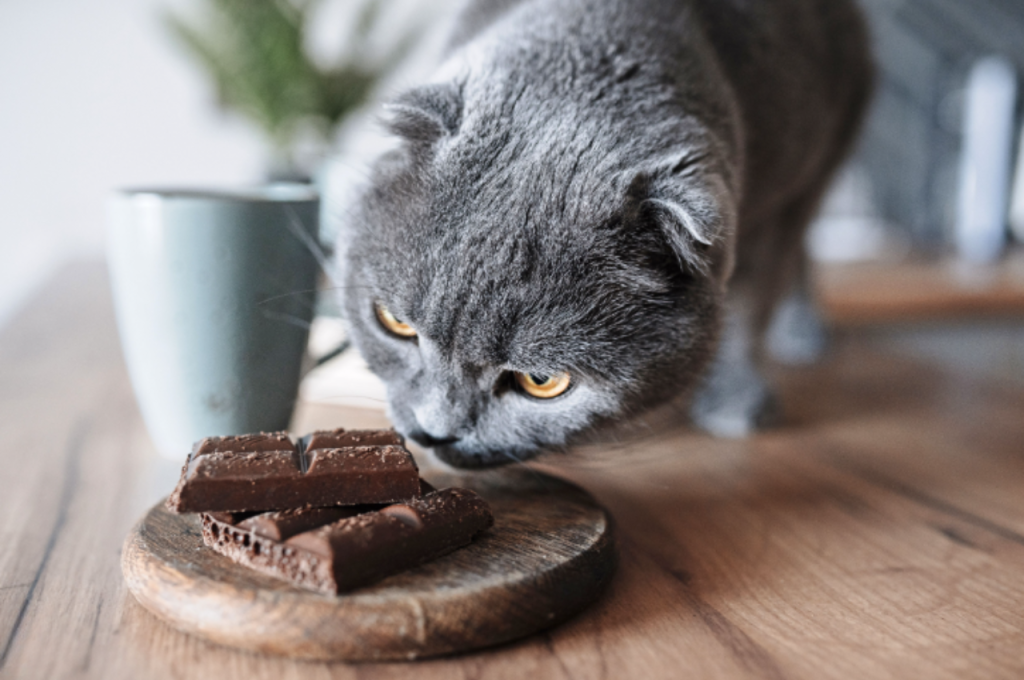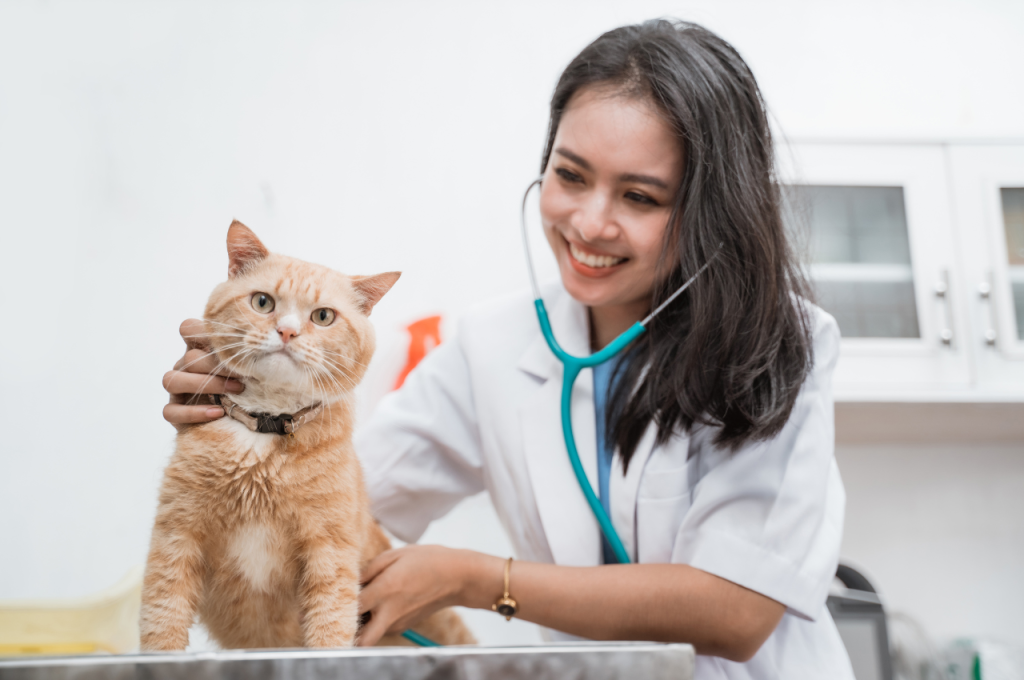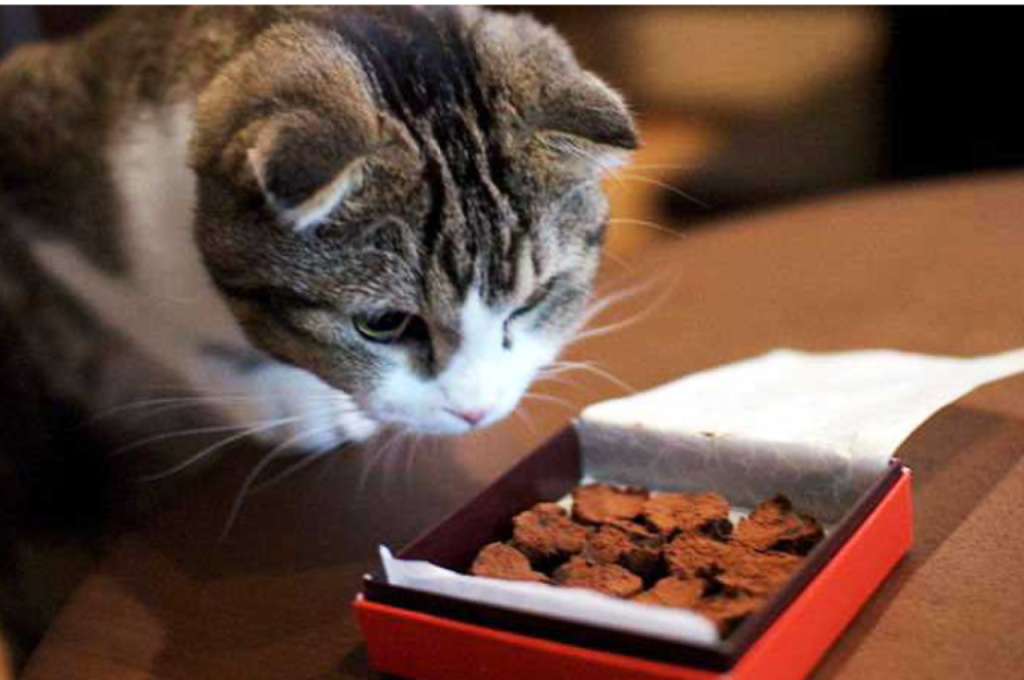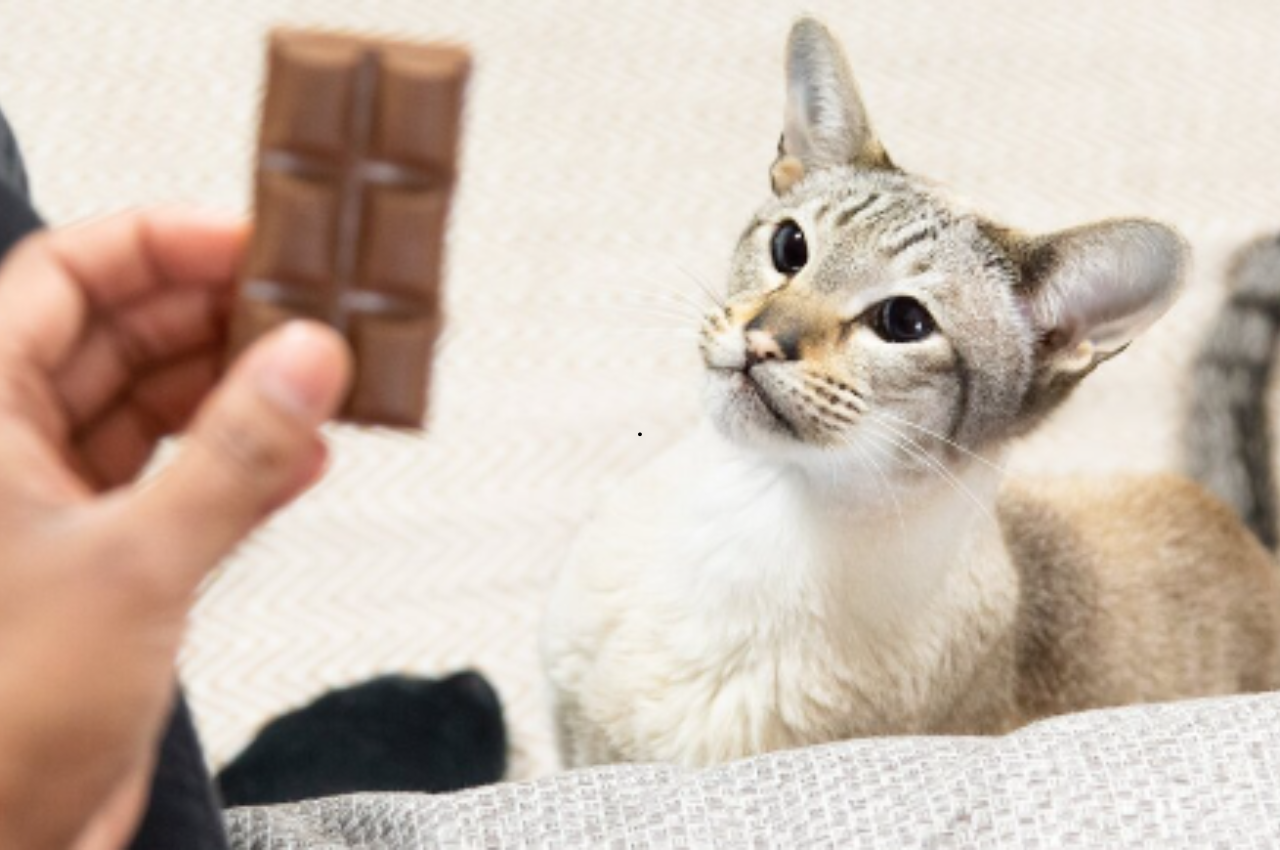No, cats should not eat chocolate. Chocolate contains substances that are toxic to cats.
Cats should not consume chocolate as it contains theobromine, which can be harmful to their health. Theobromine can cause symptoms such as vomiting, diarrhea, rapid breathing, and even more severe issues like seizures and heart problems in cats. It’s essential to keep all chocolate and products containing chocolate out of reach of cats to prevent accidental ingestion. If you suspect that your cat has consumed chocolate, it’s crucial to contact your veterinarian immediately for guidance on the next steps to ensure your cat’s well-being.
The Hidden Risks of Chocolate to Felines
The hidden risks of chocolate to felines are significant. Chocolate contains theobromine and caffeine, which are toxic to cats. Even small amounts can cause symptoms like vomiting, diarrhea, rapid breathing, increased heart rate, and seizures. Dark chocolate and baking chocolate are particularly dangerous due to higher theobromine levels.

If your cat consumes chocolate, contact your veterinarian immediately. Prevent accidental ingestion by keeping chocolate and chocolate-containing products out of reach. Understanding these risks helps ensure your cat’s safety and well-being, highlighting the importance of being vigilant about their diet and environment.
Toxic Ingredients in Chocolate
Chocolate contains theobromine and caffeine, which are toxic to cats. Theobromine can cause heart issues and seizures in felines.
Why Chocolate is Dangerous for Cats
- Cats lack the enzymes to metabolize theobromine and caffeine effectively.
- Even small amounts of chocolate can lead to poisoning in cats.
- Symptoms of chocolate poisoning in cats include vomiting, diarrhea, and restlessness.
Decoding The Toxicity: Theobromine & Caffeine
Decoding the toxicity of chocolate for cats is crucial for feline owners. Theobromine and caffeine in chocolate can be harmful to cats and may lead to symptoms like vomiting, diarrhea, and even seizures. It’s best to keep chocolate out of reach of cats and stick to cat-safe treats.
The Science Behind Theobromine Poisoning
When it comes to decoding the toxicity of chocolate for cats, understanding the role of theobromine is crucial. Theobromine is a naturally occurring compound found in cocoa beans, the key ingredient in chocolate. While humans can metabolize theobromine relatively easily, cats lack the necessary enzymes to break it down efficiently. As a result, theobromine can accumulate in their system, leading to potential toxicity.
Theobromine is classified as a methylxanthine, a type of stimulant that affects the central nervous system. It works by blocking adenosine receptors in the brain, resulting in increased alertness and stimulation. However, in cats, theobromine can have serious consequences due to their inability to metabolize it effectively.
Caffeine’s Effect on a Cat’s System
In addition to theobromine, chocolate also contains caffeine, another methylxanthine compound. Caffeine is a powerful stimulant that affects the nervous system, heart rate, and blood vessels. When ingested by cats, caffeine can lead to similar symptoms as theobromine poisoning.
Both theobromine and caffeine can cause a range of adverse effects in cats, including increased heart rate, restlessness, tremors, vomiting, diarrhea, and even seizures. These symptoms can vary depending on the amount of chocolate consumed and the size of the cat. It is important to note that dark chocolate and unsweetened baking chocolate contain higher levels of theobromine and caffeine compared to milk chocolate, making them even more dangerous for cats. Even small amounts of these types of chocolate can potentially lead to toxicity.
If you suspect your cat has ingested chocolate, it is crucial to seek immediate veterinary attention. Theobromine and caffeine poisoning can be life-threatening, and prompt intervention is necessary to prevent further complications.
Symptoms of Chocolate Poisoning in Cats
Chocolate can be toxic to cats, and symptoms of chocolate poisoning may include vomiting, diarrhea, increased thirst, rapid breathing, and even seizures. It is important to keep chocolate away from cats to prevent any potential harm.
Recognizing The Signs
Cats are highly sensitive to theobromine, a compound found in chocolate, and ingestion can lead to chocolate poisoning. Symptoms of chocolate poisoning in cats may include vomiting, diarrhea, rapid breathing, increased heart rate, muscle tremors, and seizures. These signs can appear within 6-12 hours of consuming chocolate.
Debunking Myths: Can Cats Self-regulate Chocolate Intake?
Cats should never eat chocolate as it’s toxic to them. They lack the ability to self-regulate chocolate intake, posing serious health risks. It’s crucial to keep chocolate away from cats to prevent poisoning incidents.
The Truth About Cats and Sweets
Cats lack the ability to metabolize theobromine in chocolate effectively.
Why Cats Might Be Attracted to Chocolate
Chocolate contains compounds that entice cats due to their sensitive taste buds. Cats can mistake chocolate for a tasty treat, leading to accidental ingestion. Theobromine in chocolate can be harmful to cats even in small amounts.
Treatment and Recovery From Chocolate Ingestion
Cats should not eat chocolate as it contains theobromine, which is toxic to them. If a cat ingests chocolate, immediate treatment is necessary. Recovery involves supportive care to manage symptoms such as vomiting, diarrhea, and seizures. Contact a veterinarian for guidance and monitoring.

First Aid for Chocolate Consumption
If you suspect that your cat has ingested chocolate, it is important to take immediate action. Administering first aid can help mitigate the potential harm caused by chocolate consumption. The first step is to remove any remaining chocolate from your cat’s reach and prevent further ingestion. Next, contact your veterinarian for guidance on how to proceed.
Veterinary Interventions and Prognosis
In cases of chocolate ingestion, it is crucial to seek veterinary intervention. Your veterinarian will assess the severity of the situation and determine the appropriate treatment plan for your cat. Treatment may involve inducing vomiting to remove the chocolate from the digestive system or using activated charcoal to prevent further absorption of toxins. The prognosis for recovery depends on several factors, including the type and amount of chocolate consumed, as well as the timeliness of treatment.
To summarize, when it comes to treating and recovering from chocolate ingestion in cats, prompt action is key. Administering first aid and seeking veterinary intervention can greatly increase the chances of a positive outcome. Remember, chocolate is toxic to cats, so it is crucial to keep it out of their reach at all times. By staying vigilant and taking appropriate measures, you can help ensure your cat’s safety and well-being.
Prevention: Keeping Chocolate Away From Cats
Chocolate can be toxic to cats, so it’s crucial to prevent them from accessing it. Keep chocolate out of reach and secure it in a closed container to ensure the safety of your feline companion.
Keeping Chocolate Away from Cats As a responsible cat owner, it’s essential to keep chocolate away from your feline friends. Chocolate contains theobromine, which can be toxic to cats and cause various health problems. Here are some tips to help prevent your cat from ingesting chocolate.
Safe Storage Tips
One way to prevent your cat from accessing chocolate is by storing it safely. Keep all chocolate products in a high cabinet or a locked container where your cat cannot reach. Be sure to check your bag or purse for any chocolate items before leaving them unattended.
Alternatives to Chocolate for Treats
Cats love treats, and there are plenty of safe alternatives to chocolate. Some of the best treats for cats include cooked meat, canned tuna, and small amounts of cheese. You can also find cat-safe treats at your local pet store.
In summary, it’s crucial to keep chocolate away from cats as it can be toxic and cause health issues. By storing chocolate safely and offering alternative treats, you can keep your cat healthy and happy. Remember to always consult your veterinarian if you suspect your cat has ingested chocolate.
Understanding Different Chocolates and Risks
From White to Dark: Chocolate Varieties
Cats are known for their curious nature, and this often extends to their dietary choices. When it comes to chocolates, it’s essential to understand that not all chocolates are created equal. Different varieties of chocolate contain varying levels of theobromine, a compound that is toxic to cats. While white chocolate contains the least amount of theobromine, milk chocolate contains more and dark chocolate contains the highest levels. This distinction is crucial when considering the potential risks associated with cats consuming chocolate.
The Dose Makes The Poison: Quantity Matters
It’s important to recognize that the toxicity of chocolate to cats is dose-dependent. Even small amounts of chocolate can pose a risk to feline health. When a cat ingests chocolate, the theobromine can lead to symptoms such as vomiting, diarrhea, rapid breathing, and even seizures. Therefore, it’s critical for cat owners to be vigilant about keeping chocolate out of reach and seeking immediate veterinary care if their feline companion consumes any amount of chocolate.
Educating Others: Spreading Awareness About Chocolate and Cats
Cats are known for their curiosity and sometimes get into things they shouldn’t. As responsible pet owners, it’s crucial to educate ourselves and others about the potential dangers that certain foods, like chocolate, pose to our feline friends. By spreading awareness, we can create a safe environment for our pets and prevent unnecessary harm.
Sharing Knowledge with Cat Owners
One way to spread awareness about the dangers of chocolate for cats is by sharing knowledge with other cat owners. Whether through social media, blog posts, or in-person conversations, providing accurate information can help prevent accidental chocolate consumption by cats. By educating others, we can collectively work towards keeping our feline companions safe from harmful substances.
Creating a Safe Environment for Pets
Creating a safe environment for our pets involves more than just avoiding chocolate. It’s about being mindful of all potential hazards, including toxic foods, plants, and household items. By ensuring that our homes are free of harmful substances and educating others about these dangers, we can minimize the risk of accidental poisoning and keep our beloved cats safe and healthy.

When to Seek Veterinary Help
If you notice any of these symptoms or suspect that your cat has ingested chocolate, it is crucial to seek immediate veterinary assistance. Chocolate poisoning can be life-threatening for cats, and prompt medical attention can greatly improve their chances of recovery. Do not wait for symptoms to worsen, as early intervention is key in treating chocolate poisoning in cats.
Conclusion
Ultimately, it’s crucial to remember that chocolate is toxic to cats. Even small amounts can lead to serious health issues or even be fatal. To keep your feline friends safe and healthy, it’s best to avoid giving them any chocolate treats altogether.
